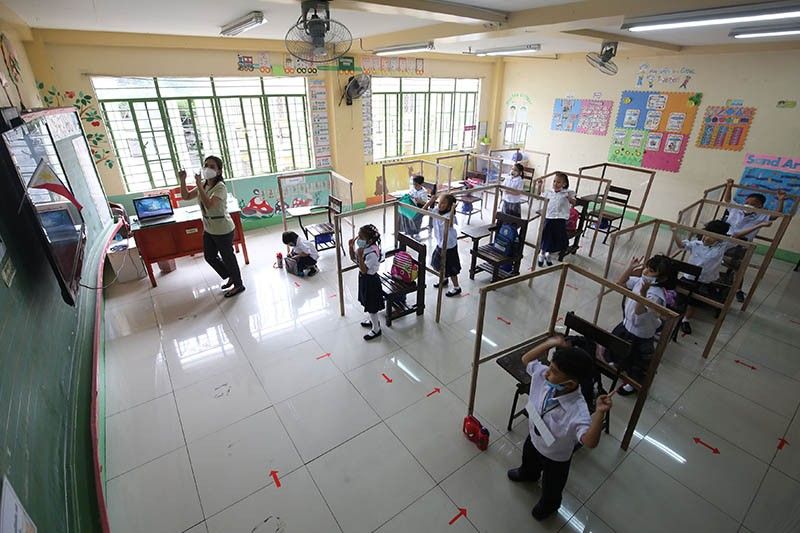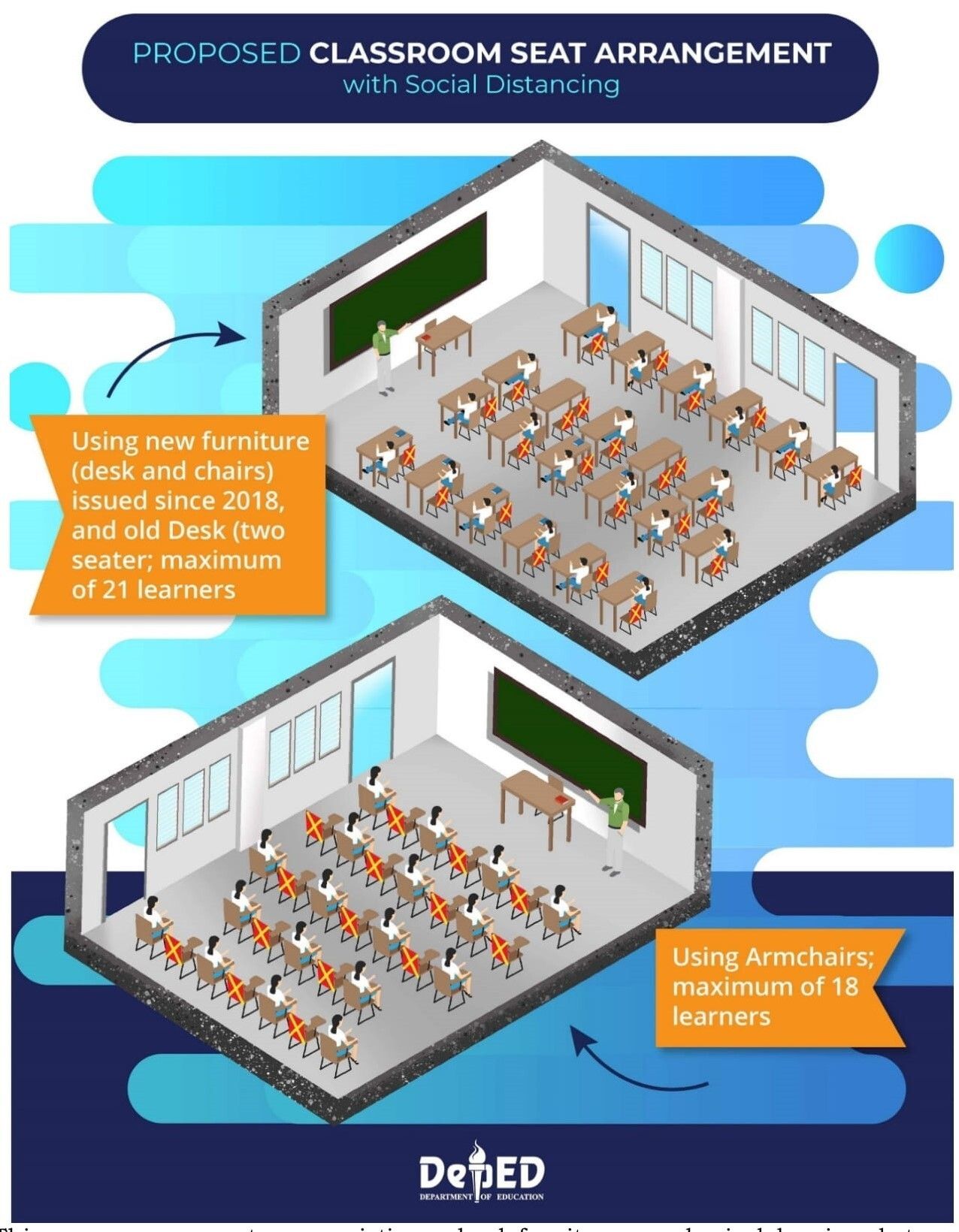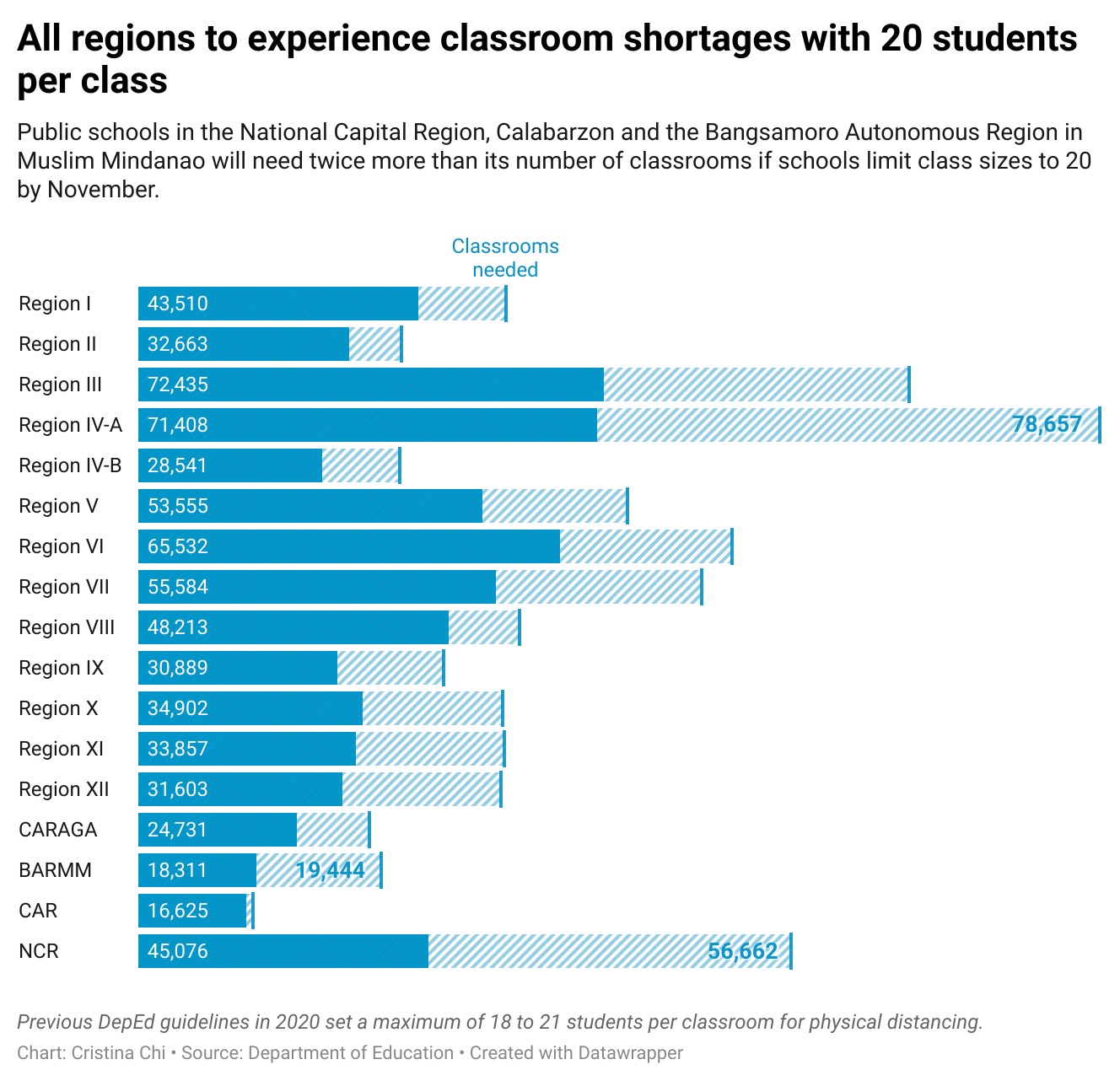DepEd data shows imminent classroom shortage with face-to-face classes

MANILA, Philippines — After more than two years of school closures, millions of public school students are set to return to classrooms this school year after the Department of Education (DepEd) ordered schools to shift to five-day in-person classes by November 2.
But school officials may have some serious planning to do to prevent overcrowding once students trickle back to campus.
Duterte’s first order as education secretary, DepEd Order 34, s. 2022, bans all schools from implementing “purely distance learning” and blended learning after October 31 as it moves towards full face-to-face classes.
Without clarifying how students can maintain physical distancing in schools with limited facilities, Vice President and Education Secretary Sara Duterte said on July 14 that the department has left it up to schools to cap their class sizes this school year.
The DepEd order only indicates that schools must “implement physical distancing whenever possible.”
“Hindi po kami naglagay ng exact size ng class dahil iba-iba po yung situation ng lahat ng mga schools natin. There are no schools na pare-pareho sila exactly sa kanilang classrooms and sa kanilang teachers,” Duterte said.
But public schools nationwide could be short of approximately 400,000 classrooms if they cap their class sizes at 20 students to maintain physical distancing, based on enrollment data from school year 2020 to 2021 and data from the National School Building Inventory from school year 2019 to 2020.
According to DepEd’s guidelines for minimum health standards in schools during the first year of the pandemic, or DepEd Order No. 14, s. 2020, students can maintain a physical distance of one meter apart with only 18 to 21 students per classroom, depending on whether they use desks or armchairs.

A 2021 aide memoire released by former DepEd Undersecretary Alain Pascua said that packing classes with 40 to 45 students could decrease classroom shortages, but this would result in “minimal to no physical distancing.”
The enrollment and classroom data used for this report was taken from the 2021 aide memoire, which warned of classroom shortages as public schools gradually shift to face-to-face learning.
President Ferdinand Marcos Jr. acknowledged the need to assess the “condition and availability” of classrooms for face-to-face learning in his first State of the Nation Address on July 25.
Projected shortages with 20 or 40 students per class
With students going to school five days a week by November, Philstar.com used the latest available enrollment and classroom data to compute how many more classrooms need to be built if schools limit class sizes to 20 or 40 students.
Data analysis showed that public schools in all regions would need more classrooms if they were to limit class sizes to 20 students to strictly adhere to physical distancing.
Calabarzon (Region IV-A), which has the second highest number of classrooms in the country at 71,408, would require at least more than twice their number of classrooms if class sizes were to be restricted to 20 students, or 78,657 more classrooms.
The National Capital Region (NCR) and Bangsamoro Autonomous Region in Muslim Mindanao (BARMM) and would also be short of twice their present number of classrooms.

Meanwhile, setting a maximum class size of 40 – close to the typical pre-pandemic class size in public schools – would eliminate classroom shortages for all regions except Calabarzon, NCR and BARMM.
Even if public schools do away with the one-meter apart rule with 40 students in one classroom, an estimated 10,000 more classrooms would still need to be constructed: for instance, NCR would still be short of 5,793 classrooms, while Calabarzon would need 3,624 classrooms. BARMM would need around 500 more classrooms.

Calabarzon and NCR are the first and second most populous regions, according to the Philippine Statistic Authority’s (PSA) 2020 census. Almost half or 16 of the country’s 33 highly urbanized cities are in NCR alone.
From 2015 to 2020, BARMM was also the fastest growing region with an annual population growth rate of 3.26%, according to the 2020 census of PSA.
Even as the government attempts to catch up to a growing student population by allocating more budget to school building constructions, “the limited or lack of buildable space in schools located in highly urbanized areas has not allowed the programming and construction of school building projects,” Pascua wrote in a 2021 aide memoire proposing the construction of high-rise school buildings.
Bigger class sizes a tough trade-off
During a forum held by the Movement for Safe, Equitable, Quality, and Relevant Education on July 22, an associate professor at the College of Education at the University of the Philippines - Diliman said that teachers worry about being greeted with the familiar sight of students sitting elbow-to-elbow in face-to-face classes, like ‘sardines in canned goods.’
“Hindi liliitan ang class size. Bakit? Dahil kulang ang classrooms. Dalawang taon ang pandemya pero hindi pa rin tayo naghanda,” Lizamarie Olegario said. “Paano pag magkasakit si teacher? Eh di walang klase ang mga estudyante.”
Aside from posing health risks, bigger class sizes could also make it difficult for teachers to keep tabs on each student’s learning progress and maintain discipline during class.
Duterte said in a statement on July 20 that the president has suggested a plan to have an “institutionalized blended learning mode” where schools in areas with “special circumstances” can continue on a blended learning setup, but the DepEd has yet to provide more details as of writing.
An uncertain period of school closure could lead to learning losses, especially for students in low-income families with scant resources, according to the Basic Education Development Plan (BEDP) 2030, DepEd’s first long-term plan for basic education.
The BEDP also mentions that DepEd should continue to prioritize investments in information and communications technology and “sustain schools’ experience with blended learning and the use of online modality.”
- Latest
- Trending


































